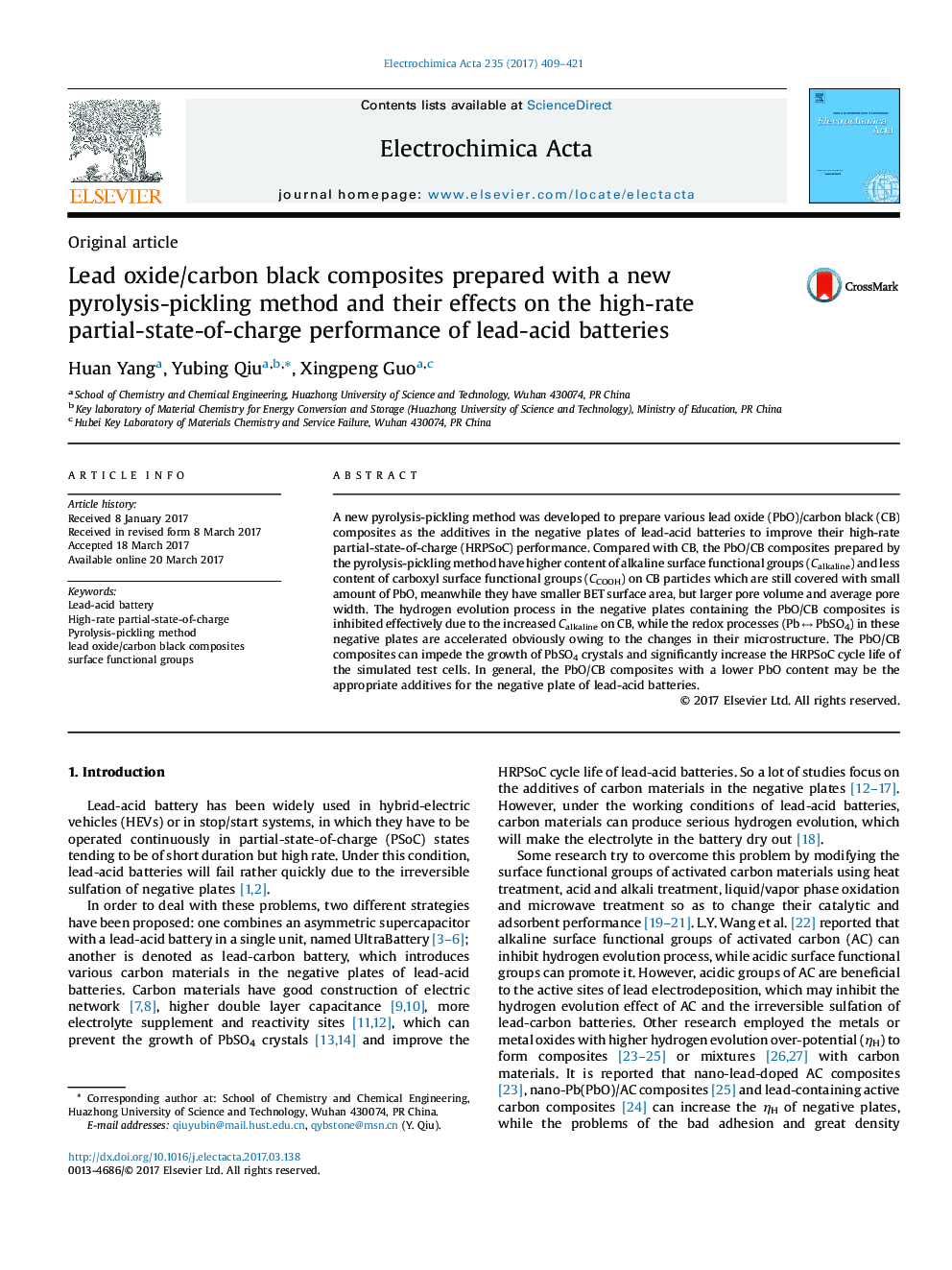| Article ID | Journal | Published Year | Pages | File Type |
|---|---|---|---|---|
| 6471630 | Electrochimica Acta | 2017 | 13 Pages |
â¢New pyrolysis-pickling method was developed to make PbO/carbon black (CB) additive.â¢Pyrolysis-pickling processing increases alkaline surface groups on CB.â¢PbO/CB composites can effectively inhibit the H2 evolution in negative plates.â¢PbO/CB composites with lower PbO content increase HRPSoC cycle life significantly.
A new pyrolysis-pickling method was developed to prepare various lead oxide (PbO)/carbon black (CB) composites as the additives in the negative plates of lead-acid batteries to improve their high-rate partial-state-of-charge (HRPSoC) performance. Compared with CB, the PbO/CB composites prepared by the pyrolysis-pickling method have higher content of alkaline surface functional groups (Calkaline) and less content of carboxyl surface functional groups (CCOOH) on CB particles which are still covered with small amount of PbO, meanwhile they have smaller BET surface area, but larger pore volume and average pore width. The hydrogen evolution process in the negative plates containing the PbO/CB composites is inhibited effectively due to the increased Calkaline on CB, while the redox processes (Pb â PbSO4) in these negative plates are accelerated obviously owing to the changes in their microstructure. The PbO/CB composites can impede the growth of PbSO4 crystals and significantly increase the HRPSoC cycle life of the simulated test cells. In general, the PbO/CB composites with a lower PbO content may be the appropriate additives for the negative plate of lead-acid batteries.
